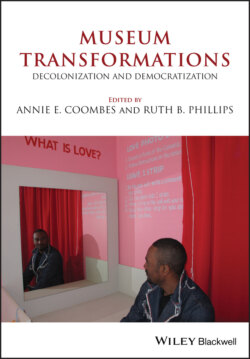Читать книгу Museum Transformations - Группа авторов - Страница 37
The basic concept
ОглавлениеAn important framing for the exhibition concept was established by the Kuratorium’s decision that the main function of the center, as regards content, was “to personalize and individualize the horrors of the Holocaust” (Third meeting of the Kuratorium, February 24, 2000, Archives of the Foundation). The exhibition would make it clear that behind the almost inconceivable number of six million murdered Jews lay the reality of individual lives which were to be commemorated here. The second framing came from the architect: there would be 800 square meters of space for the exhibition, four square exhibition rooms of equal size, and several lobby areas. For those who wanted to minimize the role and tasks of the future center, this was more than enough. But for those who wanted to provide historical context and information about its victims at this central place of Holocaust commemoration in the German capital, it was quite limited.
Between its introduction of the basic concept to the members of the Kuratorium in July 2000 and the report of March 7, 2001, the small working group of historians developed a first draft that was quite minimal. The underlying perception was that visitors, having walked through the field of stelae and been emotionally moved, would look for a place to rest in the subterranean center. Here they could in a cautious and dignified manner get some orientation with regard to questions they might have. They would enter a foyer with information about the memorial itself and about other institutions at original sites. The first room, programmatically called Room of Silence, would provide benches to rest and contemplate, but contain only very basic information about the number of victims and the countries they came from. In addition, there would be one or two quotes on the specific interpretations of the Holocaust (“rupture in civilization,” “singularity”). The second room (Room of Fates) would exhibit up to 12 large photos of Jewish families from different cultural, social, and national backgrounds on the walls in combination with some information on their personal fates during the Holocaust. In the third room (Room of Names), visitors would see names of murdered Jews in fluorescent letters on the walls, and would be able to search for names in the Yad Vashem collection of names in a computer database. The last room (Room of Sites) would contain maps and information on the geographical dimension of the mass murder across Europe (Quack 2002, 249–262). That was all. With the exception of the family portraits in the second room and access to the Yad Vashem database, there was no attempt to personalize and individualize the fates of the victims. Since space was limited, people were not supposed to linger at the center, but rather to pass through it quickly. This was an understandable aim considering the expected numbers of visitors in relation to the small space. However, this first draft had serious flaws: there was great resistance to any attempt to include museological and educational considerations in the discussion. This first working group did not address the crucial questions regarding how to approach a historical event of horrific mass murder and genocide in an exhibition that would be visited and viewed by visitors of all ages, and how to contextualize the events and to make visible the perpetrators in an exhibition dedicated to the victims.
As a consequence, the working group was enlarged to include museum experts such as Christoph Stölzl, the founding director of the new Berlin Historical Museum, prominent historian of Jewish history Monika Richarz, and other well-known historians of the Holocaust, National Socialism, and resistance, such as Ulrich Herbert, Wolfgang Benz, and Peter Steinbach. They had all advised historical exhibitions before. Aleida Assmann, an expert in cultural studies who had done extensive work on history and collective memory, was also asked to participate, and commented on the process from time to time. In addition, the active involvement of young historians employed at the managing office of the foundation (Ulrich Baumann, Eva Brücker, Stephanie Fischer, Jürgen Lillteicher, and Uwe Neumärker) made possible a broader discussion and helped introduce necessary changes to the concept, which would eventually be discussed and confirmed by the Kuratorium. Among the members of the Kuratorium who wanted to provide more content and advocated a less minimalistic concept for the future center was its chairman, Wolfgang Thierse. Of like mind was Wolfgang Benz, head of the advisory committee. Most successful in bridging the gaps between content, design, and architectural interests, and in gaining the support of undecided members of the Kuratorium, was Salomon Korn who, together with exhibition designer Dagmar von Wilcken, architect Peter Eisenman, my colleague Günter Schlusche, and myself, became part of another working group (Design) which the Kuratorium commissioned to decide on the relationship between content and design.
